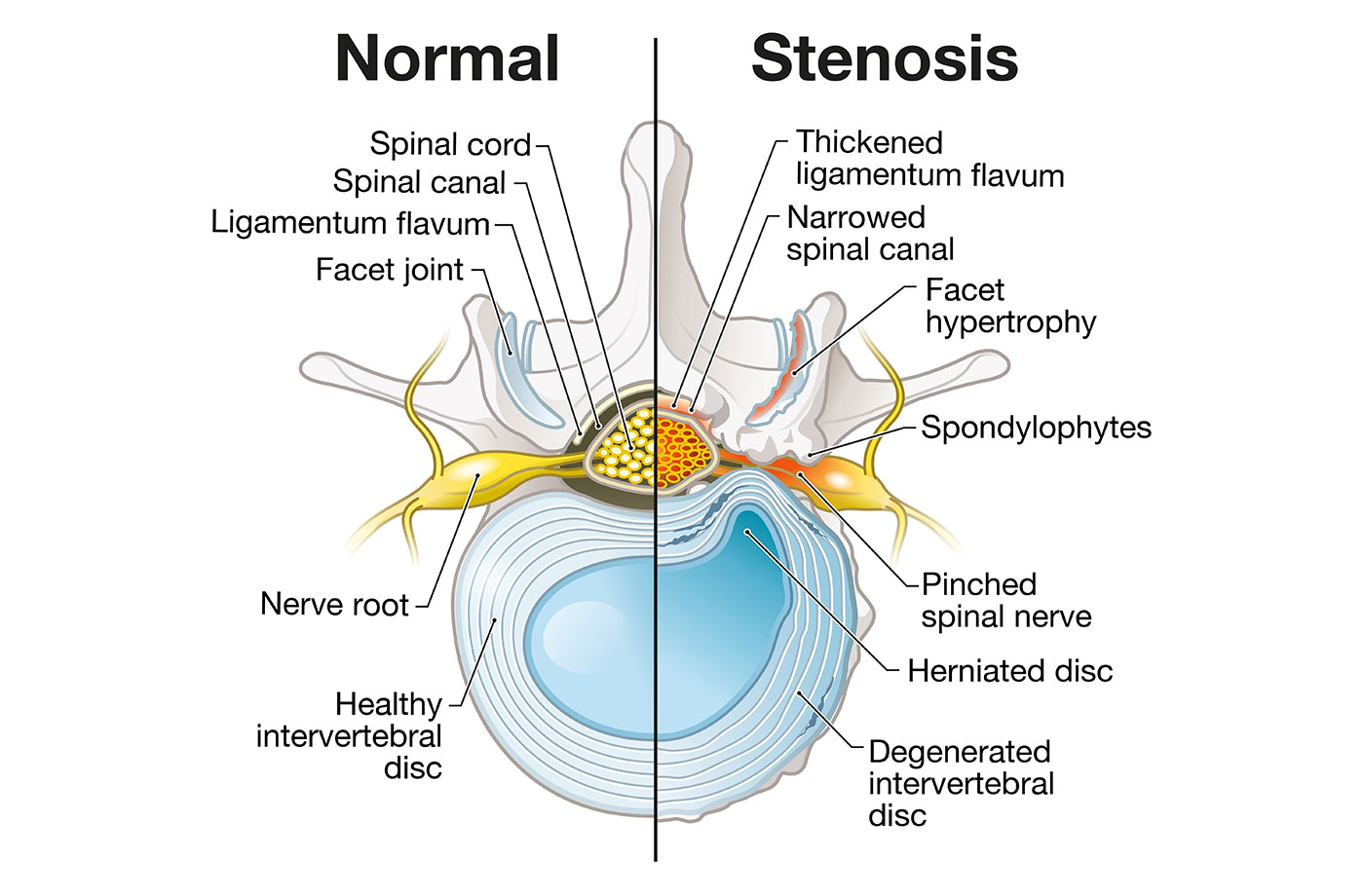
Lumbar Stenosis: Causes, Symptoms and Treatment Options for Narrowing of the Spinal Canal and Its Impact on Lower Back Pain
Lumbar stenosis is a common condition that affects the spinal column in the lumbar area of the back, causing the narrowing of the spinal canal and putting pressure on the spinal nerves. This condition can result in a range of symptoms, including low back pain, leg symptoms, muscle weakness and neurological deficits. In this blog, we’ll take a closer look at lumbar stenosis, including its causes, symptoms and treatment options.
Causes of Lumbar Stenosis:
Age-related changes such as degenerative changes and overgrowth of bone, as well as congenital spinal stenosis, can lead to the narrowing of the spinal canal. Bone spurs, disc herniation and overgrowth of soft tissues can also cause lumbar stenosis. Additionally, medical conditions like Paget’s disease and blood clots can contribute to this condition.
Symptoms of Lumbar Stenosis:
Symptoms of lumbar stenosis can vary widely, but some of the most common ones include lower back pain, leg symptoms, muscle weakness and neurological deficits. Neurogenic claudication, which is pain that occurs when walking and improves when resting or flexing the spine, is also a common symptom. Vascular claudication, which is pain that occurs when walking long distances and is related to poor blood flow, can sometimes be mistaken for neurogenic claudication.
Diagnosing Lumbar Stenosis:
A physical examination, medical history, and imaging tests such as CT, MRI and X-rays can help diagnose lumbar stenosis. Differential diagnosis is important to rule out other conditions such as cauda equina syndrome, lateral recess stenosis and foraminal stenosis.
Treatment Options for Lumbar Stenosis:
Nonsurgical treatments for lumbar stenosis include physical therapy, pain medication, anti-inflammatory medication and epidural injections. Physical therapy can help improve muscle strength and flexibility and may include exercises emphasizing lumbar flexion. Epidural steroid injections can provide pain relief for several weeks or months. Surgical intervention such as decompressive laminectomy or spinal fusion may be recommended for severe symptoms or when other treatments have failed. Clinical trials are underway to explore new treatment options for lumbar stenosis.
Lumbar stenosis is a common condition that affects many older adults in the United States, but it can also occur in younger people. It is important to seek medical attention if you experience symptoms such as lower back pain, leg symptoms, or neurological deficits. With proper diagnosis and treatment, most individuals with lumbar stenosis can manage their symptoms and maintain a good quality of life. If you have been diagnosed with lumbar stenosis or experiencing pain that could be associated with lumbar stenosis, please contact us at #973-971-3500.